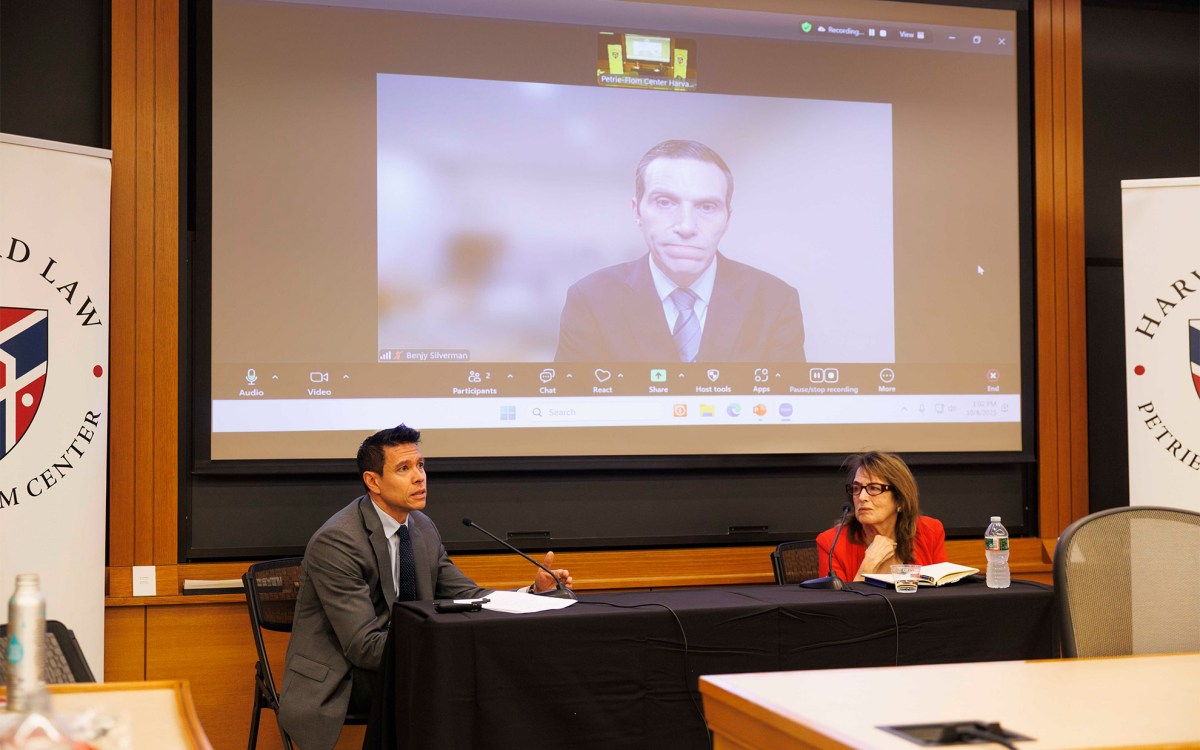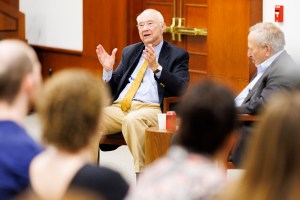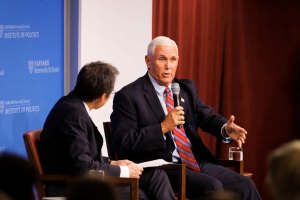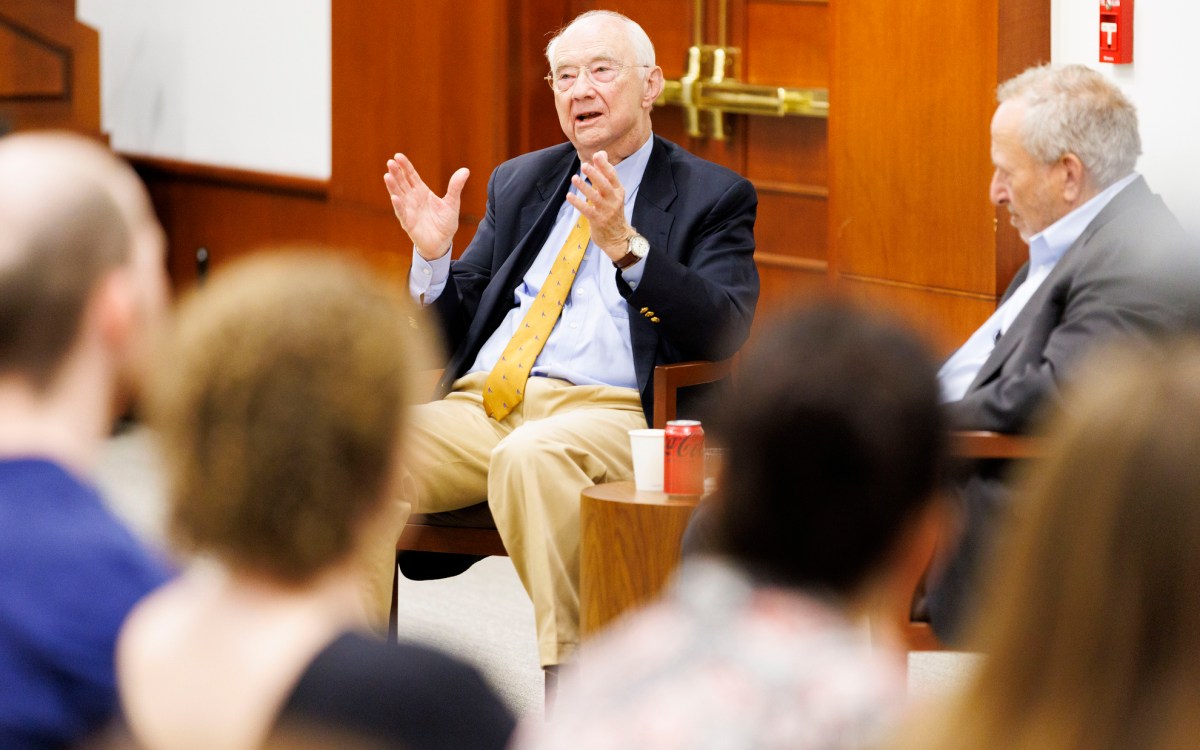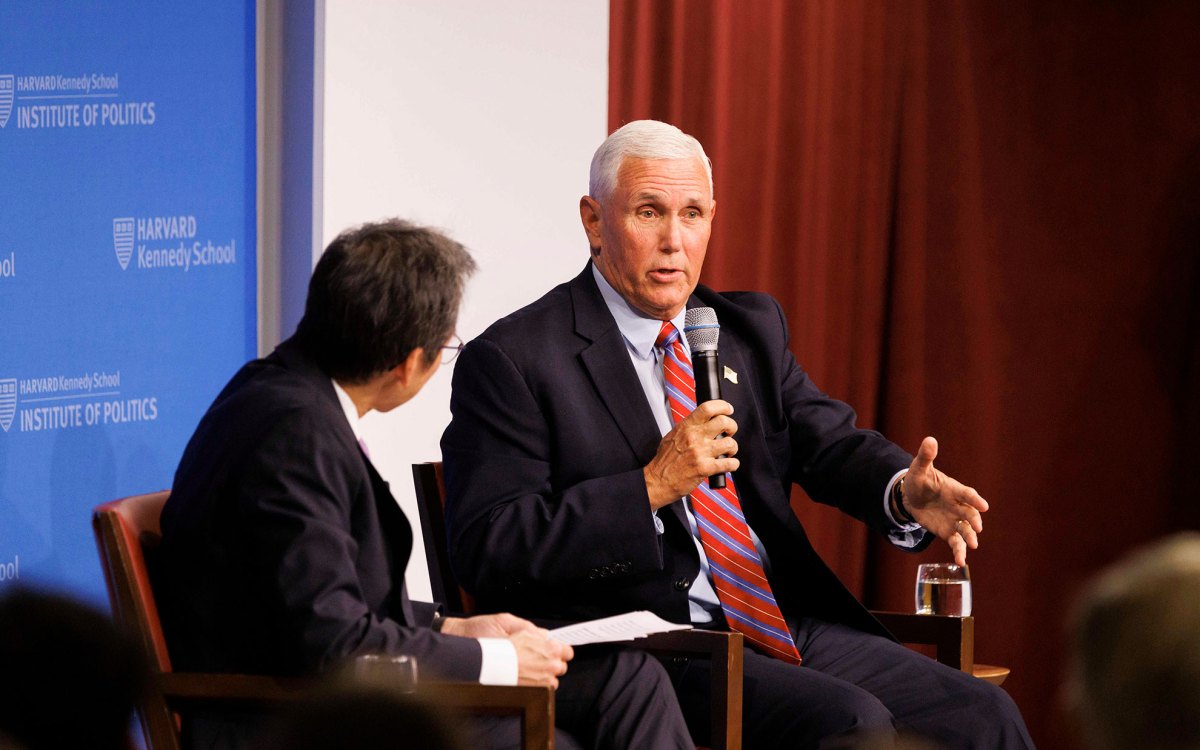‘Paging God: Religion in the Halls of Medicine’
Chaplains play important roles in hospitals
What happens when a Buddhist monk visiting the United States is hospitalized, terminally ill with liver cancer? Does religion interfere with his medical care? What about his Buddhist brethren, unable to join him bedside? Who will provide the appropriate services and ceremonies? Well, says Wendy Cadge, that’s where hospital chaplains come in.
Chaplains are just one of the ways in which hospitals and religion cross-pollinate — but, says sociologist Cadge, a current fellow at the Radcliffe Institute for Advanced Study, this cross-pollination can sometimes be a tricky business.
“Does religion and spirituality influence your health?” asked Cadge. “I don’t think this is an unimportant question. … Social institutions — temples, churches, mosques — … are often involved in the answer to this question in ways that are rarely studied or talked about.”
Cadge visited the ailing monk in a Catholic hospital in Pennsylvania. “He was going to die — not in a temple … but in this local hospital,” she recollected. “I wondered if he was awake how he would feel about being treated in a Catholic hospital. I wondered if the hospital had a priest or a chaplain, if that person might come by.”
Cadge explained that at most hospitals, the question of religion is a blank box on admissions paperwork. When she asked a hospital clerk why the information was relevant, he responded, “I don’t know. I guess it’s in case you die.”
The lasting image of the dying monk in his hospital bed in Pennsylvania left Cadge with an arsenal of questions. How do religion and spirituality interact with medicine?
Through research at major, non-religious-affiliated hospitals across the country, Cadge explored this question by shadowing hospital chaplains, analyzing the roles they play and how they affect the religious and spiritual goings-on inside hospitals.
In a talk inside the Radcliffe Gymnasium, titled “Paging God: Religion in the Halls of Medicine,” Cadge said most people think of chaplains as the people wandering the halls of hospitals, making bedside calls. But Cadge explained that chaplains have many perspectives on the work they perform and define their responsibilities in a multitude of ways. Chaplains are involved in almost all aspects of hospital life, said Cadge. In their most basic definition, these chaplains visit with ill patients; but their role in hospitals is, in fact, complex and much-debated.
The treatment of the sick and dying in hospitals raises profound religious and spiritual issues. In their not-quite-formal, not-quite-defined roles, chaplains address these questions. They are intermediaries for patients and families; guides who help navigate through emotional and complicated end-of-life issues. Yet, in an article for the Web site Religion Dispatches (www.religiondispatches.org), Cadge says that chaplains “have little voice when it comes to public conversations about religion and medicine in this country.”
A reason for this, Cadge surmised, is that there are relatively few chaplains in the United States — roughly 10,000. And, in general, chaplains lack medical training, and, as Cadge points out in the article, “Many of the country’s leading voices around religion, spirituality, health, and medicine are physicians.”
Even as atheism continues to rise in the United States, Gallup polls consistently show 95 percent of Americans still believe in a higher power; 70-85 percent of Americans pray for their own health and their family’s; and 72 percent believe God can cure people outside of medical science. What’s more, 60 percent of Americans and 20 percent of medical professionals think a person in a persistent vegetative state can be saved by a miracle.
So, it’s not surprising, perhaps, that in Cadge’s hospital research, which took her to intensive care and neonatal units, she found that it was common among non-chaplain staff to privately pray for their patients, regardless of their patients’ religious beliefs or whether or not they had solicited religious help.
Differences in religious viewpoints is an important issue for Cadge, who wanted to know how chaplains adapt to patients with different religions, and how patients with various religions and beliefs perceive chaplains.
Most of the chaplains Cadge observed would serve patients regardless of their denomination, and if patients or families requested a religious-specific prayer or ritual, the chaplain would oblige. Other times, chaplains simply sat in with patients, a person to talk to. Cadge recalled chaplains who collected prayers from families. Most were written on Post-It notes left tacked to makeshift memorials created by families to honor their loved ones who had died in the hospital. The chaplains put them in shoeboxes; and when the shoeboxes overflowed, the chaplains didn’t toss them out, the prayers were ceremoniously burned.
Cadge documented designated spaces in hospitals reserved for prayer; these chapels range from traditional church-looking rooms to rooms meant to be all-encompassing, or “interfaith,” outfitted with alcoves with specific religious symbols and texts.
The scope of a chaplain’s work varies with patients, but a chaplain’s responsibilities are deep and vast. “The one thing I found which most chaplains do … is working around death, often managing death for hospitals,” said Cadge, who noted that in some hospitals she visited, chaplains were paged for every trauma coming into the emergency room, and some were responsible for coordinating plans with the morgue and serving as a liaison for families.
“Part of a chaplain’s task is to help people find something to be hopeful about,” said Cadge, quoting a chaplain identified only as Karen. Karen also told Cadge, “People come literally from all over the world. We chaplains are the ones who make these people not be strangers. … We invite them into the community so that this becomes a safe haven in some regard.”
John, another chaplain Cadge encountered, had a different view. He believes a chaplain is “just someone who walks in, takes [patients] as they are, listens to their stories. … The most we can offer them is just a listening ear and a caring heart.”
A lot of a chaplain’s work is about healing, explained Cadge, quoting Karen. “A lot of work we chaplains do is about reconciliation, to help people to feel whole, to bring them back to what has been to what is, to what can be, either in this life or the next.”
